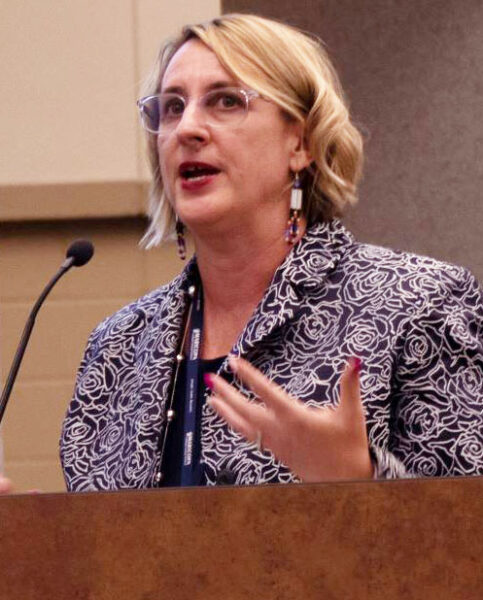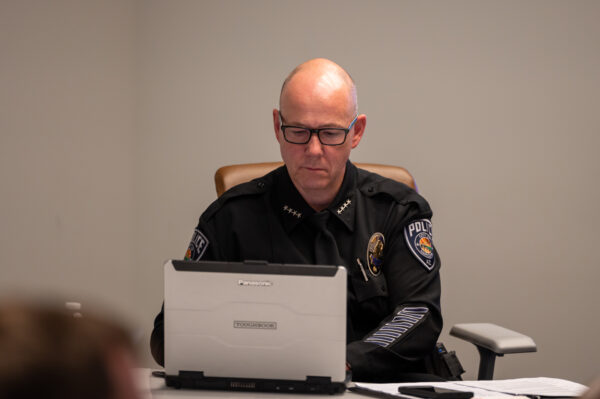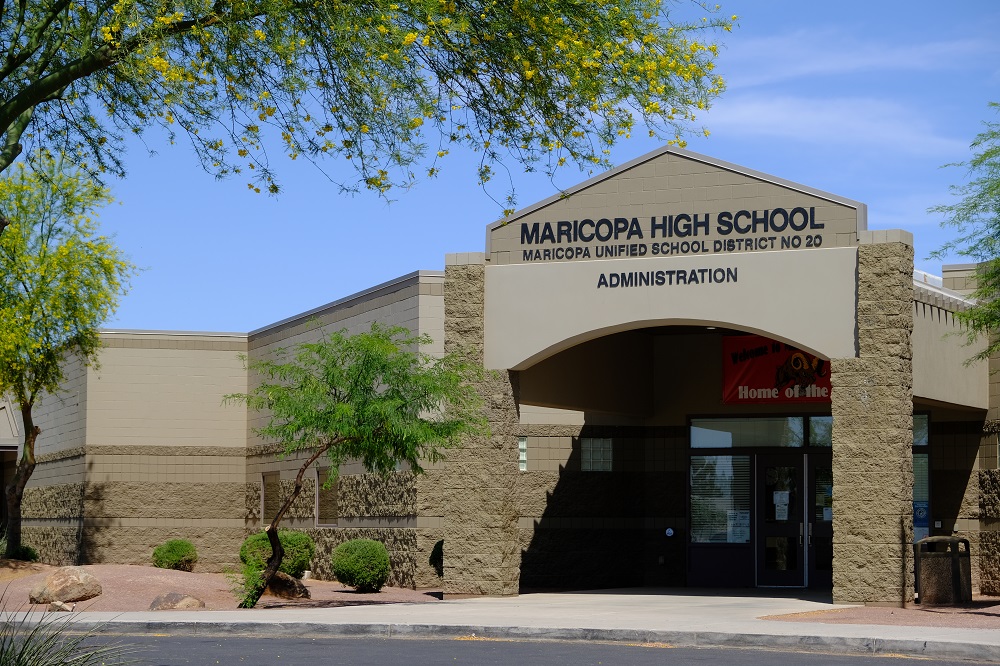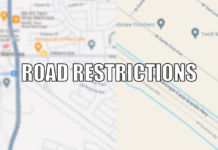A tide of national headlines involving school safety has dominated the national conversation the last couple months.
But the leaders at Maricopa Unified School District have been considering such issues for quite some time now.
Tracey Pastor, the district’s director of administrative services, oversees the safety and security measures aimed at protecting students and staff.
“Safe schools are an essential part of our strategic plan,” Pastor said. “And how we accomplish that is through education, planning and preparation.”
The district’s focus is broad.
“We look at everything we can to promote the protection of students and staff,” Pastor said.
The risks assessed include violence from exposure to threats, bullying, illegal activities and anything related to public safety.
“It could be things that you don’t frequently even think of as a safety risk, like a gas leak,” Pastor said. “Our emergency response plan addresses all of those things, from an intruder all the way to a bee swarm.”
Partners in safety
Pastor said the Maricopa Police Department plays a crucial role in keeping schools safe.
It’s part of the job MPD Chief James Hughes takes seriously.
“Dr. Lopeman and Tracy Pastor, they both have my cellphone number,” Hughes said. “So, if there’s an incident at school, they call me on my cell, and if I hear something, it’s vice versa. So as soon as there’s an issue, they have direct access to me and all the resources at the Maricopa Police Department.
“That’s imperative, whether it’s something small, or whether it’s, you know, a bomb threat or a gun threat, or we deal with a lot of situations with the internet and social media.
“Early intervention is the key.”
MPD’s role during an emergency is important, but just as important is what happens before and after an incident.
Pastor noted a lockdown a few years ago at Pima Butte Elementary that was reported by the media.
“But what might not have been shared is that anytime we have an event like that, we do something called an after-action report,” Pastor said. “And that’s where you bring (together) the administrator who was responsible and taking care of the emergency at the scene and the police.”
After the lockdown, Pastor, the school’s principal and Maricopa police discussed what went well in their handling of the incident and what they would have done differently.
“After-action reports are important,” Pastor said. “We learn because every emergency is different.”

Along with the interpersonal side of handling threats, there’s consideration given to physical barriers.
“We look at the physical structure of our buildings,” Pastor said. “For example, the front office. Not all our schools have the same layer of protection in terms of walls and doors and glass barriers, so one of our middle schools is getting a remodel of the front lobby this summer so that we can enclose the lobby and add some glass at the front counter.”
Over the last year, Pastor oversaw a safety evaluation conducted by Lt. Col. (Ret.) Allen Kirksey, who instructs the Air Force Junior ROTC program at Maricopa High School. He also serves as the district’s safety liaison.
Last summer, Kirksey, along with one of the school resource officers (SRO) went to each school and met with the principal to review safety and security measures and look at the physical attributes of the schools. The goal: identify security deficiencies.
If one of the schools has a change in structure — a modest remodel, for example — suggestions will be made and implemented to make it more secure.
There weren’t any such situations to examine this year, Pastor said.
The district’s preparation includes ensuring police and fire departments have all the necessary contact information to reach administrators.
“We make sure that all that information is shared and [we] talk about any needs that they have as it relates to their lockdown drills and their fire drills,” Pastor said, explaining supplies and equipment are inventoried and updated regularly. In the last year, MUSD installed fresh defibrillator batteries and replaced its radios.
“We’re a growing district,” Pastor said. “So, it was time to add another receiver and more radios. The batteries don’t last forever. And so, those radios were updated this year.”
More measures are planned, she said.
“Next year, we will be introducing a new emergency alert system, and I’ll also be putting together a district safety and prevention team that will meet quarterly, because we are constantly reflecting and collecting feedback. We want to improve on all things related to safety and security.”
Staying proactive
Safety considerations extend beyond physical structures.
“We also think about the social and emotional safety of our staff and students, because we want them to feel comfortable and risk-free in and able to engage in learning,” Pastor said.
So, the next question is how to accomplish that goal.
“We invest in people,” Pastor said. “We have school resource officers (SRO) and security guards at our secondary schools and then at the district-wide level, we have a safety liaison (Kirksey) I work closely with.”
The district also has mental-health counselors at all schools, which may not be the first safety or security measure people consider. But, as Pastor explained, paying attention to those details can sometimes keep smaller problems from ballooning into larger issues.
“It’s important to have those people because sometimes staff or students feel more comfortable sharing some tips or information in those counseling sessions, or they just may simply need to process and talk through some bullying or problems that they’re having.”

Over the last year, MUSD administrators went through National Incident Management System (NIMS) training as part of a program managed by the Federal Emergency Management Administration.
According to FEMA.gov, NIMS training was created in 2006 following Hurricane Katrina to develop “a national program” and to facilitate common national standards and personnel qualification.
All kinds of situations were covered by the training.
“This could be an adult with a medical emergency, or it could be an intruder,” Pastor said. “It was going through the next steps and talking about, based on our NIMS training, what do we do?
“The police and fire departments also go through the same training. So, we all have common vocabulary that we use when there are emergencies.”
Pastor said emergency training was extended throughout the administrative positions in the system to include additional staff, including counselors.
There’s also comprehensive school threat guidance training recommended by the Arizona Department of Education. That training “assists us to understand threats and trains our staff to conduct a series of interviews with a student who might pose a potential threat,” Pastor said.
School resource officers
Most people are under the impression school resource officers are on campus to serve as security guards. SROs are MPD officers assigned to a school or schools.
In MUSD, the high schools and middle schools all have an SRO. The elementary schools are covered by the closest SRO at the closest middle or high school and MPD.
While there is an element of security to their jobs, Pastor said there’s a lot more to it than parents may realize.
“I think one of the key purposes of having an SRO is for the safety and security,” Pastor said. “But it’s also about relationships with the students.”
Hughes said the selection process for SROs is unique.
“We choose officers that we believe are proactive,” Hughes said. “We look for officers who have compassion and empathy and understand they’re dealing with juveniles and understand why they’re there.”
SROs need to set a positive example and serve as role models for kids, the chief said. They need to be a partner within that school and its educational environment.
“I think that’s critical,” Hughes said. “They fall underneath our community policing sergeants. When schools are not in session, they do community policing. They meet weekly with their community policing sergeant.”
Pastor and Hughes believe the relationship goes hand-in-hand.
“What we hope to accomplish is to do our part in assisting that people really do see the police as an important partner and a resource for all of us,” Pastor said. “And that happens by an SRO casually throwing a football around at recess time so the kids can see they’re good people and that they are there to help.
“Those sorts of relationships, in those moments, are really helpful,” Pastor said. “There’s also law-related education where an SRO goes into the classrooms to teach and talk to students about bullying, talk to them about the importance of regular attendance in our schools.”
Pastor said the reaction time by the police has been almost instant.
“They’re so quick,” Pastor said. “Anytime we’ve ever had an issue, they’ve been on site in two minutes.”
This content was first published in the July edition of InMaricopa magazine.





![City gave new manager big low-interest home loan City Manager Ben Bitter speaks during a Chamber of Commerce event at Global Water Resources on April 11, 2024. Bitter discussed the current state of economic development in Maricopa, as well as hinting at lowering property tax rates again. [Monica D. Spencer]](https://www.inmaricopa.com/wp-content/uploads/2024/04/spencer-041124-ben-bitter-chamber-property-taxes-web-218x150.jpg)

![3 things to know about the new city budget Vice Mayor Amber Liermann and Councilmember Eric Goettl review parts of the city's 2024 operational budget with Mayor Nancy Smith on April 24, 2024. [Monica D. Spencer]](https://www.inmaricopa.com/wp-content/uploads/2024/04/spencer-042424-preliminary-budget-meeting-web-218x150.jpg)





![Alleged car thief released without charges Phoenix police stop a stolen vehicle on April 20, 2024. [Facebook]](https://www.inmaricopa.com/wp-content/uploads/2024/04/IMG_5040-218x150.jpg)




![City gave new manager big low-interest home loan City Manager Ben Bitter speaks during a Chamber of Commerce event at Global Water Resources on April 11, 2024. Bitter discussed the current state of economic development in Maricopa, as well as hinting at lowering property tax rates again. [Monica D. Spencer]](https://www.inmaricopa.com/wp-content/uploads/2024/04/spencer-041124-ben-bitter-chamber-property-taxes-web-100x70.jpg)